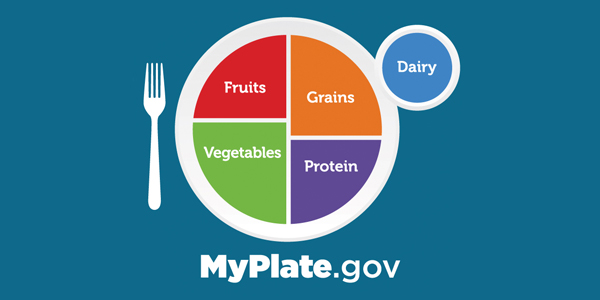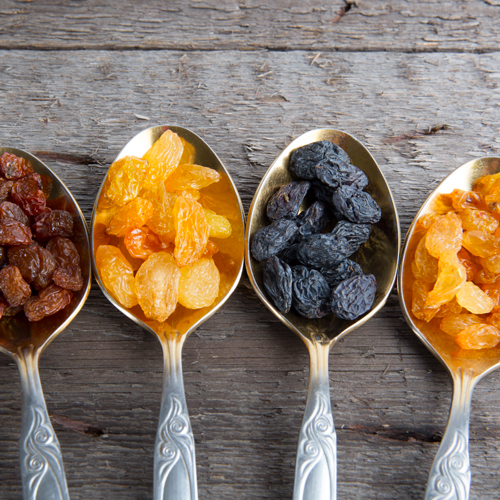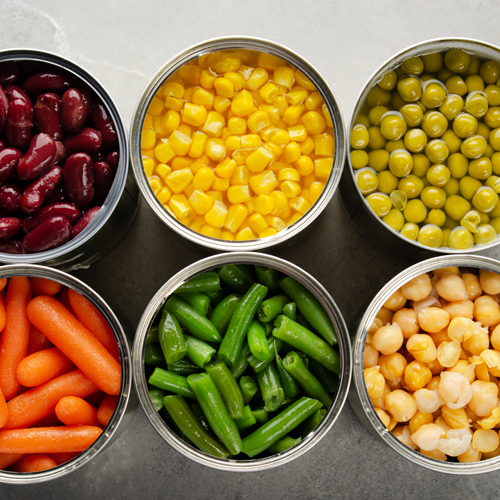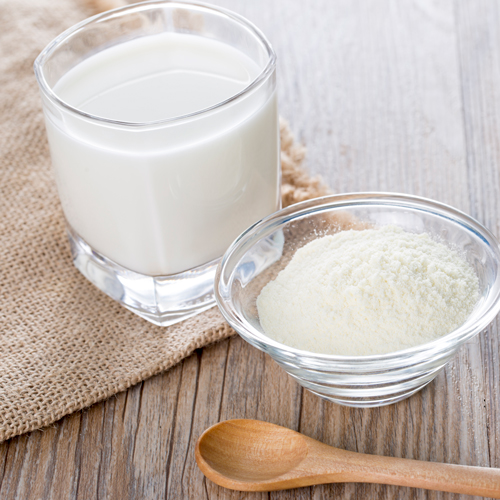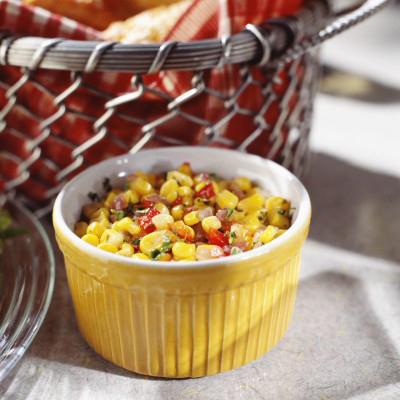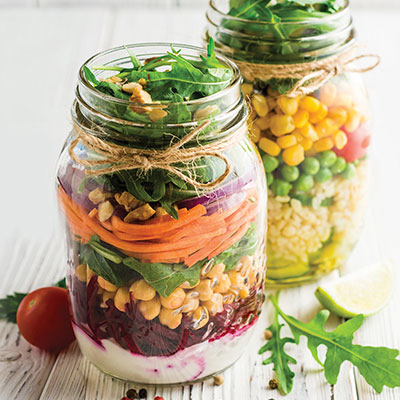
Hurricane Preparedness: Keeping Food Safe During Power Outages
Author: be well™ with Big Y® Registered Dietitian Team
According to the National Oceanic and Atmospheric Administration (NOAA), the Atlantic hurricane season runs from June 1 to November 30. Combine this year’s hurricane season with the heavy rains we have already experienced this summer season, it’s important to expect, and prepare, for potential power outages.
Do you know how to safely handle food during an outage?
How to Get Your Emergency Food Kit Ready Before a Storm Hits
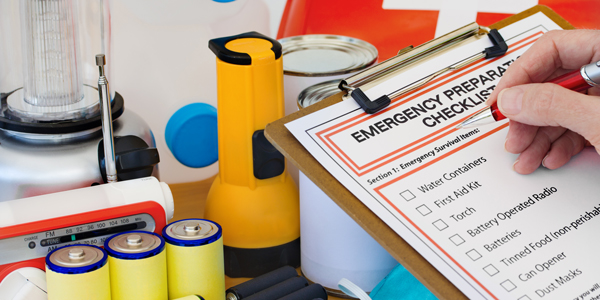
If overwhelmed by the thought of building an Emergency Food Kit or stockpile, focus on purchasing a little at a time. Start by adding one item to your grocery list every other week. Take advantage when foods go on sale. For example, if there’s a great “Buy One Get One” sale on canned tuna, pick up a can for your pantry and a can for your emergency supply. As you’re shopping, know that bulk foods are not necessary. Simply stock enough to feed your family for at least three days.
Be sure to keep your Emergency Food Supply safe. Keep foods in a waterproof bag or tote. Check for expiration dates and rotate foods at least twice per year. A great time to do this is when changing batteries in your smoke detectors!
When thinking of foods to include in your kit, put together options your family would typically eat using Food Groups as a guide. This way you won’t only have food everyone wants to eat, you’ll be meeting important nutrient needs during a stressful time as well.
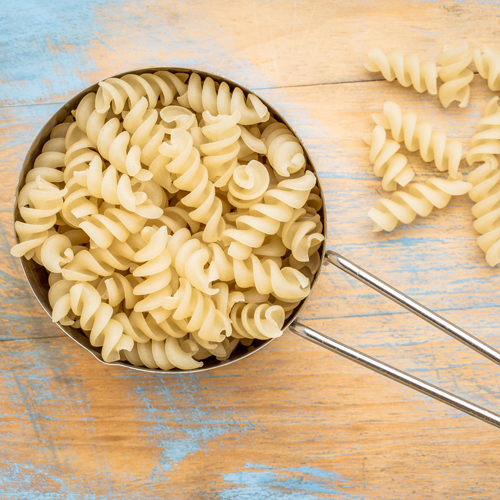
Know Portion Sizes
What counts as a serving from each of the Food Groups? See below!
- Fruits: ½-cup
- Vegetables: ½-cup
- Grains: ½- to 1 cup
- Protein: 2-3 ounce-equivalents
- Dairy: 1 cup or 8 ounces
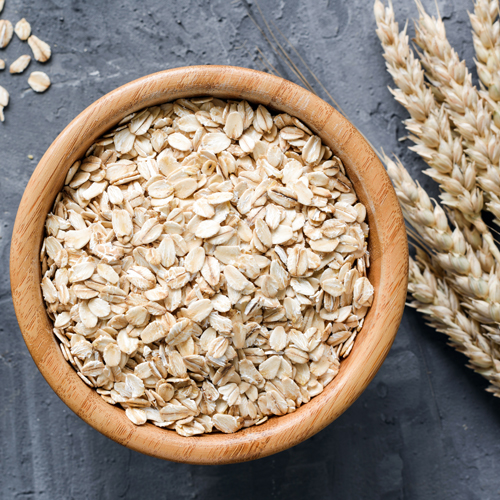
Grains
Ready-to-eat cereals (less than 5 grams sugar per serving), whole grain crackers, peanut butter crackers, crispbread, lower-sugar granola and fruit bars, meal replacement bars, granola, trail mix, microwaveable rice and grain cups (brown rice, wild rice, quinoa varieties, etc.), pre-cooked noodle bowls and lower-sodium bagged snack foods (snack mixes, popcorn, pretzels, tortilla chips) are a number of delicious options with longer shelf lives.
If you have access to a heat source and clean water, cook up whole wheat pasta, brown rice, oatmeal and additional whole grains like quinoa, wild rice, etc.
Note: Grain microwavable cups and pouches, as well as pre-cooked noodles, are safe to eat without being heated.
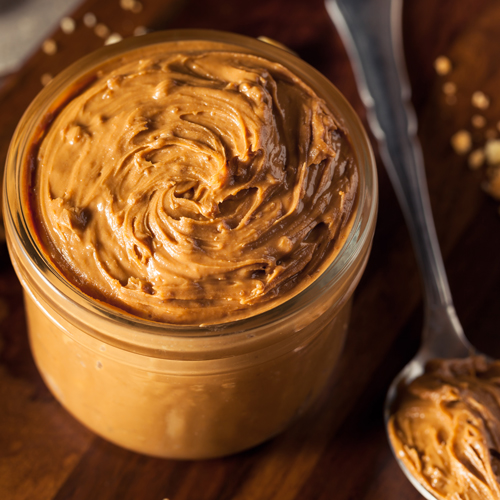
Protein Foods
Nuts (pistachios, peanuts, soy nuts, almonds, walnuts, etc.), seeds (sunflower, pumpkin, etc.), nut butters (peanut, soy, almond, sunflower), peanut butter crackers, meal replacement bars, trail mix, canned beans (pinto, black, navy, kidney, etc.), canned baked beans, meal replacement shakes and canned meats (tuna, salmon, shrimp, chicken) are excellent choices.
Note: Commercially-canned foods like beans, baked beans and meats, are safe to eat without being heated.
Fruits
Dried (cherries, pineapple, strawberries, raisins, plums, apricots, etc.), freeze-dried, canned (in 100% fruit juices or lite syrup), applesauce, 100% fruit leather and “rope,” squeezable pouches (More can be found in the Baby aisle, too!) and bottled or canned 100% juice help add flavor and important nutrients to meals during an emergency.
Vegetables
Squeezable pouches (Found in the Baby aisle!), canned beans (pinto, black, navy, kidney, etc.), canned baked beans, canned vegetables and tomatoes, canned and aseptically-sealed lower sodium soup (avoid condensed varieties) and 100% juice make meeting vegetable goals a cinch during outages.
Note: Commercially-canned foods like beans, baked beans, vegetables and soups, are safe to eat without being heated.
Dairy Products
Powdered and evaporated milk, shelf-stable aseptically-sealed milk boxes, aseptically-sealed soymilk, meal replacement shakes, shelf-stable yogurt (Found in the Baby aisle!) and instant breakfast shakes are safe ways to keep a sense of normalcy during meal times, especially with young children.
Other Necessities When the Power Goes Out
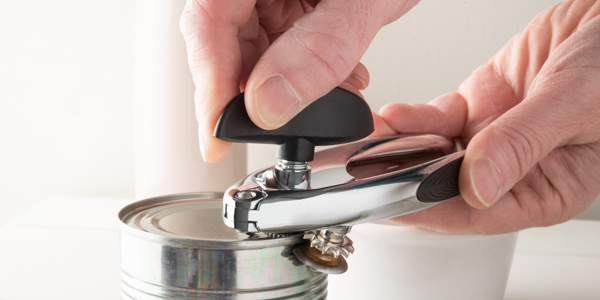
- Water- one gallon per person, per day
- Instant coffee, tea or powdered-beverage mixes
- Jelly and jam
- Comfort and stress foods
- Hard candy- especially for low blood sugar emergencies
- Medications
- Multivitamins with minerals supplements
- Special items for pets, infants or individuals with specific health needs
- Can opener
- Hand sanitizer/wet wipes
- Paper goods (plates, cups, forks, paper towels, etc.)
How to Maintain Strength and Energy During a Weather Emergency

- Eat at least one well-balanced meal each day.
- Plan energizing snacks to keep you fueled by pairing foods from at least two different Food Groups.
- Drink enough liquid to enable your body to function properly (two quarts or a half gallon per day).
- Eat enough calories to enable you to do any necessary work.
- Salty foods increase thirst, so keep them to a minimum.
Tips for Making Food Last During an Emergency
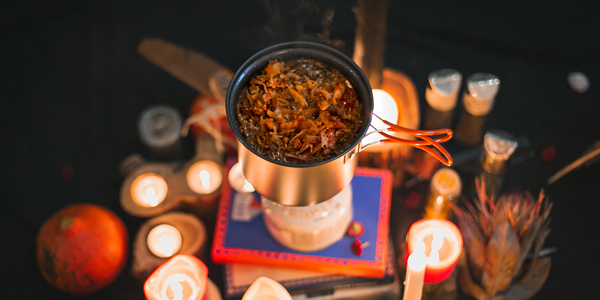
If you do find yourself without power, use perishable items first, as long as they’re safe to consume, before moving onto pantry items. Keep your emergency supply as a last source of food. Even if indoor ovens and stoves can’t be use, remember outdoor gas and charcoal grills are great options for making meals outdoors. Chafing fuel, or canned heat, can also be used to heat up small amounts of food.
Fridge and Freezer Tips When the Power is Out
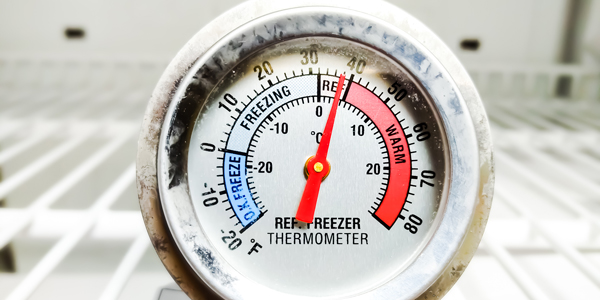
To maintain cooler temperatures in the fridge and freezer, only open when absolutely necessarily and as quickly as possible.
- An unopened fridge will keep foods cold for 4 hours.
- If refrigerated perishable foods have been kept at 40 degrees Fahrenheit or higher for 2 hours or more, they must be discarded.
- Frozen foods should be discarded after 24 hours of power loss when the freezer is half-full or 48 hours when full.
- If coolers and ice packs are available, re-packing foods while maintaining temperatures below 40 degrees is a great way to safely extend these times.
Published 8/21/2023



